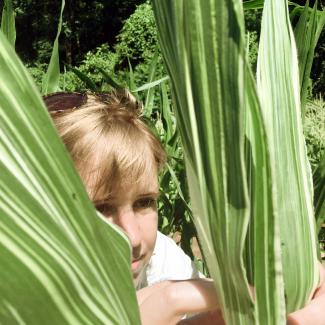Event
Looking back to look forward: understanding morphological diversity for agricultural improvement
Dr. Madelaine Bartlett, University of Massachusetts, Amherst

Abstract: Plants have evolved diverse morphological solutions to diverse ecological problems: cacti survive in deserts, tiny duckweeds float on water, and carnivorous plants get their nitrogen from prey lured into elaborate traps. Despite immense morphological diversity, plants are constructed from homologous organs, using deeply conserved genes. Understanding how the processes of evolution remixed, refashioned, and recast conserved components to generate diversity will provide transformative blueprints and strategies for innovation in synthetic biology, crop engineering, and biomimetics. To get there, we must first understand how complex morphological traits arise and change over deep time. We must also understand how evolutionary change to deeply conserved regulators affects development. My lab works to identify the genes that regulate the development of complex traits, define how these genes function together in development, and determine how evolutionary change in these genes affects the evolution of organismal form. We focus specifically on the grasses. The grass family has diversified to occupy almost every terrestrial niche, and dominates ecosystems. Multiple experimental systems in the family allow us to dissect the molecular underpinnings of this diversity, and to reconstruct molecular and morphological evolution of key genes and traits. We integrate genetics, genomics, molecular evolution, and machine learning-enabled quantitative phenotyping to provide an integrative and multi-scale view of evolution. The grass traits I will be discussing in my seminar are the evolution and development of organ elaborations called awns, and the evolution and development of floral sexuality. Both awns and floral sexuality directly impact plant fitness and crop yield. Thus, our work not only reveals the fundamentals of organismal evolution, but has important implications for agriculture.
